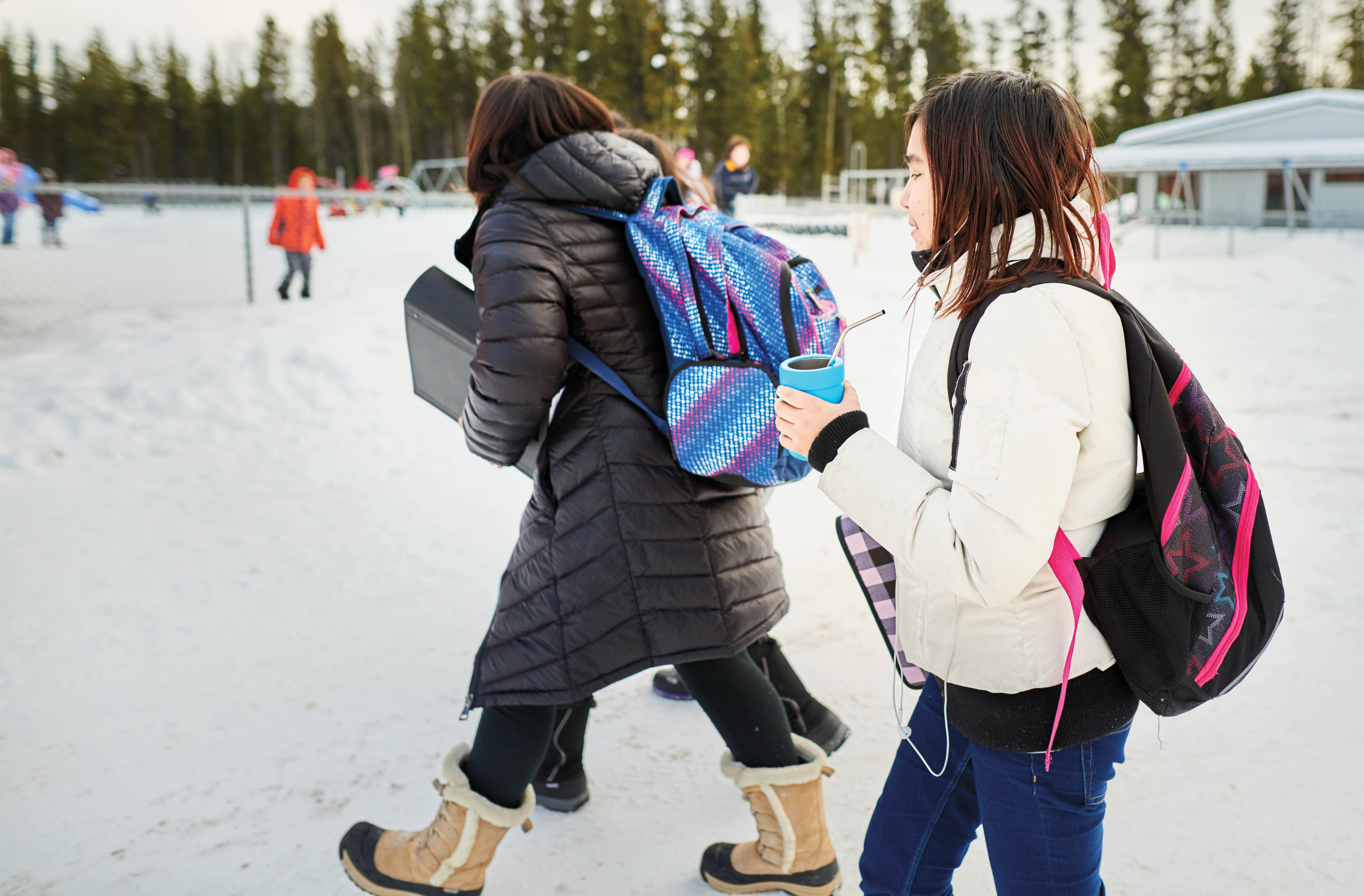Share this page
When more stories, learning theories and pedagogies are shared, all students benefit.
By Stuart Foxman
Photos: istock

Exploring new ways to connect with students, and address the curriculum, gets at the heart of professional development. There's no single road to get there, says Luanne Martin, OCT. But she knows that one way is to embed more Indigenous perspective into all AQs.
"Part of our responsibility as educators, and lifelong learners, is to be culturally responsive," says Martin, who taught K–8 for over 30 years on Six Nations, about 25 kilometres southwest of Hamilton, Ont.
That hasn't always happened. Now, all AQ courses contain specific content related to Indigenous knowledge, culture and history. The AQs also focus on Indigenous ways of knowing and being, community partnerships, and elements of critical consciousness formation (e.g., decolonization, restorative practices, and unpacking personal and systemic bias/power/privilege).
Indigenous-focused AQ courses also include culturally specific and community-created conceptual frameworks. They position AQ courses as community-based and Indigenous-led. Indigenous Elders, educators, community members, speakers and knowledge holders have steered the development of many AQs.
Now in retirement, Martin has been involved with the College on AQ consultation, and works with Six Nations Polytechnic to oversee the development of AQs. The school's offerings range from teaching the Mohawk language and teaching First Nations/Métis/Inuit children, to math and Special Education.
The new focus on Indigenous content and approaches is transformative. Martin says it helps to improve the effectiveness of the courses and the teachers who take them, no matter the area.
Six Nations Polytechnic has been an AQ provider for many years and has led the development of various AQ guidelines and courses over the past decade. This has ensured that the lived experiences and perspectives of the community have been included in AQ design and implementation. When AQ development and material are more diverse, the landscape changes "so that not just one single story is being told," she says. "You want all students to see themselves in the content that they learn."
"The learning has to relate back to your life and your world view of how everything is connected," adds Rebecca Jamieson, OCT, president (and one of the founders) of Six Nations Polytechnic.
By population, Six Nations is the largest First Nations community in Canada. "We're very much focused on making sure the knowledge of our people is recovered, and then revitalizing that in many ways. Some of that is in direct instruction with teachers," Jamieson say.

"Part of our responsibility as educators, and lifelong learners, is to be culturally responsive."
Bringing knowledge that has been marginalized more to the centre is essential. As Martin says, reconciliation is a verb, not just an acknowledgement.
Indigenous knowledge, culture and history can be linked to everything from food sovereignty, to land development, to social justice. In fact, it can be an integral part of any sort of AQ or classroom lesson. For instance, says Martin, science can include traditional teachings around water or the solar system. It's just another authentic way of knowing.
"The assumption that there's just one knowledge base and societal norm has to be opened up," says Jamieson.
The benefits of more Indigenous leadership and content go beyond broadening the scope of what AQs cover.
Having more inclusive AQs, on any topic, is also critical "to ensure the curriculum being taught is filled with diverse ways of knowing and being," says Martin.
"Indigenous content comes in different forms, like the examination of a concept," explains Jamieson. "How you would see and sustain the concept of a balance in life, in environmental science, for example, reflects a mindset."
Including a greater variety of learning theories, frameworks and pedagogies can, in some cases, specifically help Indigenous students. But it ultimately helps all students.
How are Indigenous views best incorporated? "Involvement at the grassroots level is needed so that traditional knowledge can be embedded organically, and not as a separate compartment or silo," Martin says.
For example, the learning theories in AQs need to include Indigenous world views, teachings and pedagogies. "But why not have that included with mainstream theories rather than as an add-on?" asks Martin.
"We would hope that teachers will recognize that Indigenous people are not just a footnote," she continues. "Look critically at the resources, content, wording, and messages of what knowledge is important. Understanding issues, reaching out for the truth, and recognizing history and the value of everyone's traditional views will go a long way."